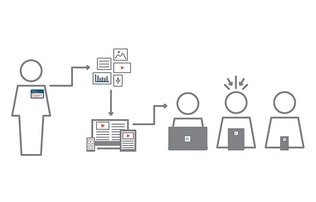Learner retention is perhaps the most important metric to measure the success of L&D initiatives. However, as we’ve covered in this blog before, the vast majority — often as high as 90 percent — of new skills are lost within a year if not reinforced by practical follow-ups or assessments.
A recent article in Chief Learning Officer magazine discussed some recent research on the science of forgetting.

Indeed, today’s instructional designer needs to take on the additional role of ‘learning experience manager,’ creating effective experiences rather than delivering simple learning content. L&D leaders must address learning shortfalls by considering memory dynamics and seek new ways to grab the learner’s attention. As organizations shift the responsibility for learning onto learners, they have to take charge of their experiences with the guidance of mentors to create meaningful personal focus.
‘Our ability to “crush” the forgetting curve is a critical imperative if we are to build the leadership and workforce capability our organizations must have to be successful.’
— CLO magazine
The article went on to explore 5 ways to minimize forgetting and learning waste:
Create multiple spaced impressions.
Instructional designers can build both ‘push’ and ‘pull’ notifications into their courses, reminding learners of key concepts. This encourages learners to implement what they’ve learned outside of attending the formal course. Informal or offline tactics — lunchroom discussions, signs in the office, notes on the bulletin board — can also do the trick.
Harness the power of video.
Videos tell stories, elicit emotions, and enhance attention. They can be short- or long-form, and are often more information-rich than simple text and graphics. Use video that can be accessed via multiple touchpoints, and include subtitles in the event that the learner cannot turn on the volume (videos on Facebook employ this same tactic).
Go mobile.
It goes without saying that the entire learning experience must be made available — and even enhanced — when the learner accesses content via a mobile device. Perform testing and observe that the content renders equally beautifully and engaging on a smartphone, tablet, or browser.
Integrate social and search.
Search is powerful — and even addicting. Learners and their managers may often rely on search to seek out the content or resources they need, but oftentimes, a recommendation from a colleague or trusted associate can surface the most appropriate material. Ensure that your learning incorporates search but also the opportunity to gather recommendations from others.
Prove value through business context.
Think beyond the skills to be taught. Instead, think of the bigger picture, and how the employee’s newly acquired skill set can affect or even change a function within the organization, such as customer value, product innovation, or process efficiencies. Aligning learning with business goals broadens the context and increases the value of the learning process.
Clearly, crushing the forgetting curve by engaging learners to ensure learning happens, sticks and is applied, is at the heart of what today’s learning experience managers must do for their organizations. Organizations will be better prepared to meet the challenges of the future, employees will feel more relevant (and happier), and you can have the satisfaction of knowing that you have excelled in your role as an L&D leader.




